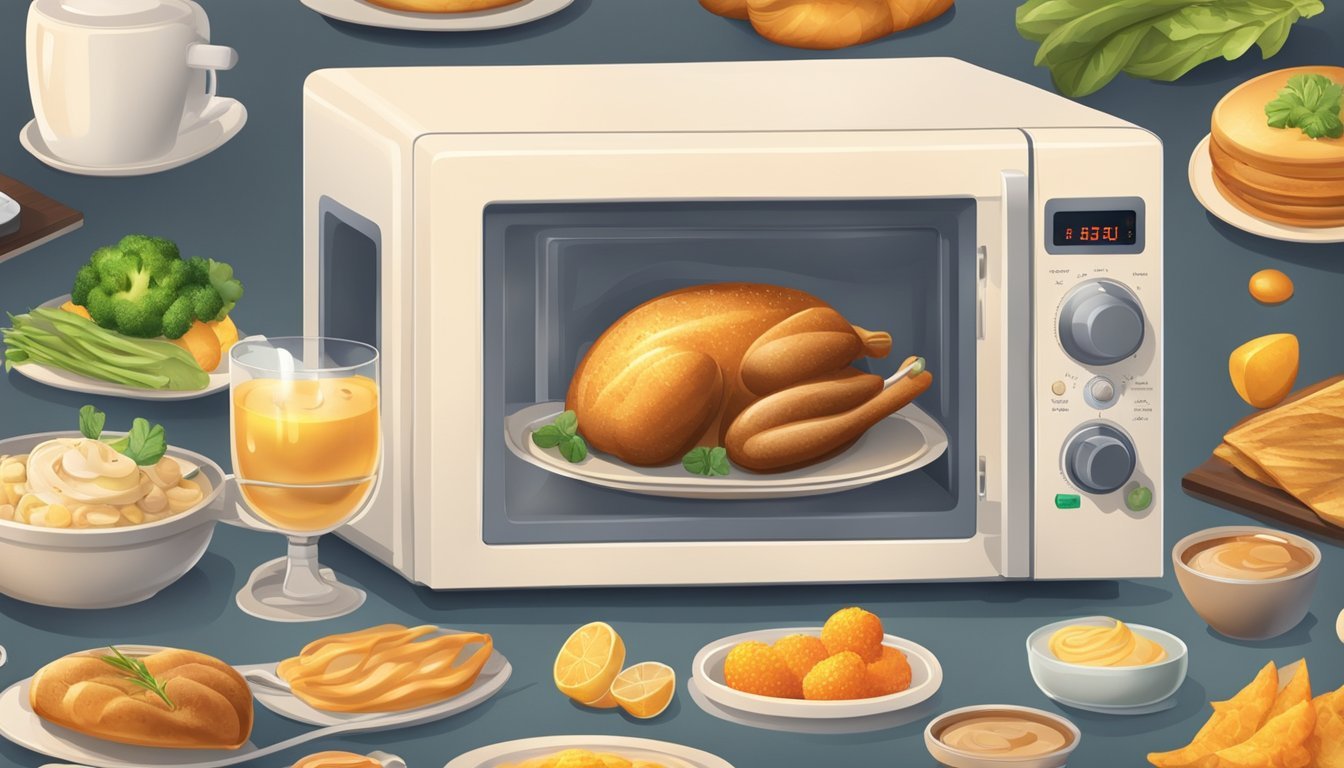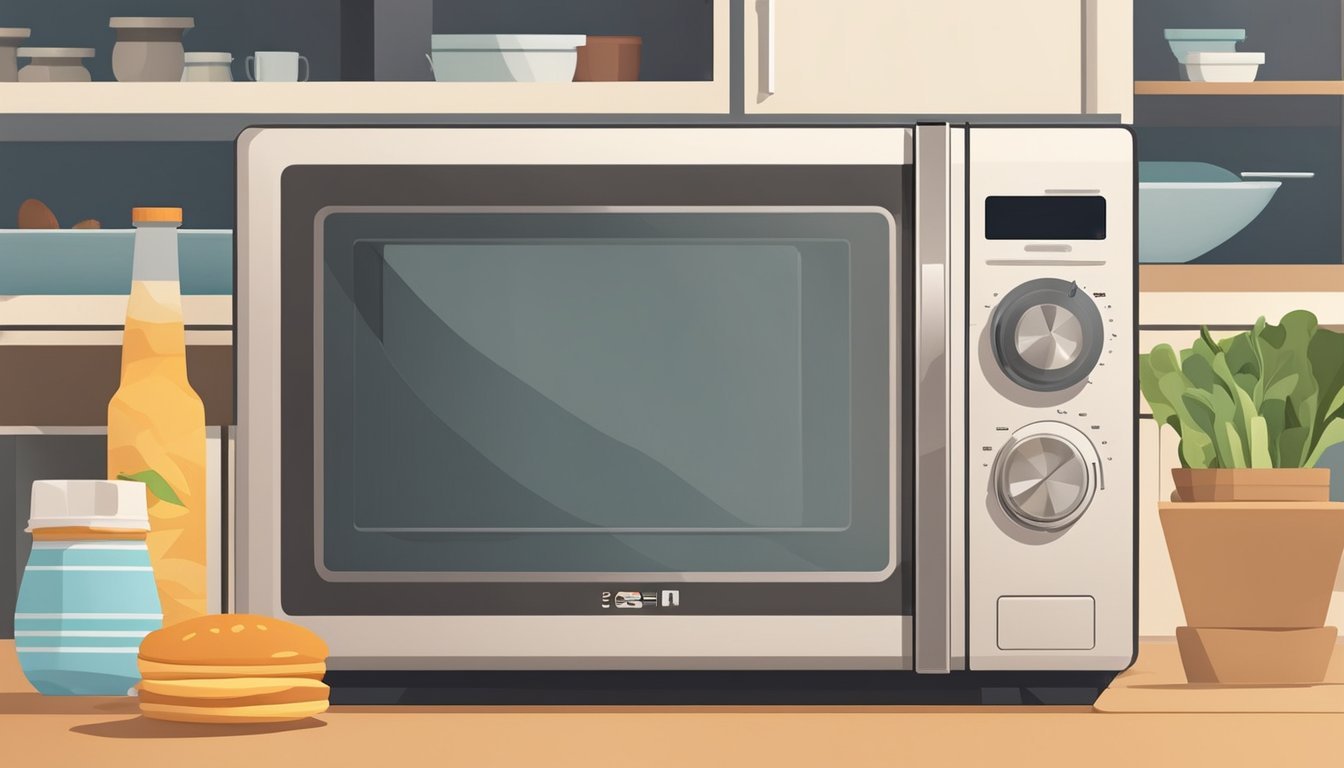How to Make the Most of Your Microwave's Capabilities
Unlocking Efficient Cooking Techniques
Microwaves have become a staple kitchen appliance, valued for their convenience and speed. Beyond simple reheating and defrosting, modern microwaves offer a variety of settings and features that can transform the way one cooks. However, many of these features remain underutilized, as users often rely on basic functions without exploring their microwave’s full potential.
Understanding the capabilities of a microwave can lead to not only faster meal preparations but also to enhanced flavors and textures in dishes that one might not associate with microwave cooking. By using appropriate power levels and settings, cooks can achieve results comparable to traditional cooking methods. Adapting recipes for microwave use and following microwaving guides allows busy individuals to optimize their time in the kitchen efficiently.
Additionally, proper use and maintenance of a microwave significantly contribute to its performance and longevity. Employing microwave-safe utensils and regular cleaning can prevent common issues such as uneven cooking or lingering odors. Mastery over one’s microwave settings can streamline kitchen activities and empower cooks to execute a wide array of culinary tasks with confidence and ease.
Understanding Your Microwave
Microwaves have become an essential appliance in the kitchen, offering convenience and efficiency. To utilize a microwave to its fullest, one must comprehend its various settings and power levels. Microwaves typically come with a control panel that allows the user to select the appropriate cooking intensity, which ranges from high power to low power. These settings adjust the microwave's energy output to suit different types of food and cooking methods.
Microwave Power Levels:
High Power: Ideal for heating or cooking food quickly.
Low Power: Suitable for delicate tasks such as softening butter or defrosting.
When selecting a power level, it is crucial to consider the wattage of the microwave, as this determines the overall cooking time. Higher wattage units heat food more rapidly.
Programmed Settings: Many microwaves come with pre-programmed settings that automate cooking for certain dishes, taking the guesswork out of cook times and power levels.
Microwave-Safe Containers:
Always use microwave-safe dishes to avoid melting or harmful chemical leaching.
Check for the microwave-safe label on containers.
Maintenance Tips:
Clean the interior to prevent inefficiency and odor.
Replace the microwave filter regularly.
Remember, the fan within the microwave aids in dissipating heat evenly, ensuring that food is cooked uniformly. By understanding these features, users can make informed decisions on how best to operate their microwave for optimal results.
Essential Microwave Functions
Microwaves are a versatile appliance that offer various functions to enhance kitchen efficiency, deliver optimal cooking results, and maintain food safety. This section will discuss the essential microwave functions that maximize the appliance's capabilities.
Defrosting Essentials
Changing frozen food into a ready-to-cook state requires the right use of the defrost function. Most microwaves have a defrost setting where the user can enter the weight of the frozen food, and the appliance will adjust the defrosting time accordingly. To prevent partially cooked spots while thawing items like ground beef, it's advisable to pause and flip the food periodically.
Reheating and Cooking
For reheating leftovers such as pizza, pastries, soups, or bread, using the sensor cooking or reheating functions ensures food is heated evenly without drying out. To achieve even cooking, stopping the microwave to stir or rotate dishes midway through heating is beneficial, especially for stirrable casseroles and custards (how long do custards last?).
Utilizing Advanced Features
Advanced microwaves come equipped with settings that adjust cooking intensity for tasks like melting chocolate or softening butter without burning. Explore the user manual to understand features such as sensor cooking for precise results or the use of a low power setting for foods requiring slow cooking like ham and pot roasts.
Safety and Maintenance
To ensure the longevity and safety of your microwave, routine maintenance is essential. Always use microwave-safe containers and covers to prevent splattering. Regularly clean the interior and replace microwave filters as recommended in the owner’s manual to avoid blocking the fan and hindering performance.
Specialized Microwave Usage
Experiment with your microwave beyond simple reheating by utilizing it for steaming vegetables like carrots and broccoli or cooking rice, ensuring quick and even results. For perfectly crisp toppings, sprinkle dishes with cheese or breadcrumbs before microwaving. Always refer to the microwave's control panel for specific functions that cater to different foods and desired outcomes.
Enhancing Your Cooking Experience
Microwaves are not just a means to reheat leftovers; they can transform cooking experiences with efficiency and versatility. One key to unlocking this potential is understanding the different power settings. Those can greatly affect the texture and flavor of dishes, as vegetables benefit from gentler cooking to retain their color and crispness.
To enhance the microwave cooking experience, chefs recommend a variety of tips. For example, when preparing pasta, one should use a microwave-safe vessel with a lid to cover the contents. This traps steam and cooks the pasta evenly. Additionally, adding just enough water to cover the pasta and a dash of oil can prevent sticking.
Experiment with seasonings by mixing them directly with the liquid used for steaming or cooking your food in the microwave. The rapid heating helps to infuse flavors more intensely into dishes, making even simple vegetables taste extraordinary.
Below are some practical microwave tips for better dishes:
Vegetables: Cut into even, small pieces and add 2-3 tablespoons of water.
Pasta: Use a microwave-safe vessel with enough water to cover it and add oil to prevent sticking.
Efficiency is also about using appropriate containers. Glass or ceramic vessels are often best for microwave cooking since they conduct heat well and don't absorb flavors or odors.
Incorporating these methods into microwave use can revolutionize the way one approaches quick and efficient meal preparation while maintaining high-quality results.
Troubleshooting and FAQs
When a microwave isn't performing as expected, troubleshooting can often resolve many common issues. Below are some frequently asked questions and expert tips to enhance the performance and cooking experience with your microwave.
Q: Why isn't my microwave heating evenly?
Check the turntable to ensure it’s rotating properly. A malfunctioning turntable leads to uneven heating.
Examine the power settings. Your user manual can guide you on how to adjust the power levels for different dishes.
Q: What maintenance should I perform?
Keep the interior clean to prevent food particles from affecting performance.
Inspect and clean the door seals regularly to maintain optimal function and food safety.
Q: What if the turntable isn’t turning?
Verify that the turntable is correctly positioned and free from debris.
Consult your owner’s manual to see if it provides a solution specific to your model.
Q: How can I ensure food safety when using a microwave?
Stir or rotate food midway through cooking to distribute heat evenly.
Use a food thermometer to ensure that the food reaches the correct internal temperature.
Tips:
For optimal performance, refer to the owner’s manual for specific maintenance guidelines.
To enhance your cooking experience, experiment with different power levels suitable for various dishes.
If troubleshooting doesn't resolve an issue, it may be time to consult a professional or consider a replacement.
Remember that regular maintenance and understanding of your microwave’s features are key to making the most of its capabilities.
Advanced Techniques and Tips
To enhance the cooking experience with a microwave, cooks should explore and experiment with its features. Here are expert tips for achieving optimal results:
Quick Heating: Understand that various power settings can lead to better-tasting food. Instead of always setting the microwave to high, adjust the power level according to the type of food. Delicate items like chocolate or butter melt perfectly on lower settings.
Crisping: To add texture, one can utilize microwave-safe dishes designed for crisping. For example, topping a dish with breadcrumbs or cheese before microwaving can add a desirable crunch.
Faster Cooking Action Adapt Recipes Modify conventional recipes for faster cooking, incorporating microwave-friendly techniques. Steaming Steam vegetables by adding a bit of water in a bowl, covering, and microwaving for a fresh side dish.
Experimentation: Users should not shy away from trying new cooking methods. Baking and roasting in microwaves, with appropriate vessels, can open up a world of culinary possibilities.
To obtain the full potential of a microwave's capabilities, users may refer to guides that provide step-by-step instructions on various cooking methods suitable for this appliance. Through practice, one becomes adept at identifying which dishes benefit most from microwave cooking, leading to a satisfying kitchen experience.
Microwave Selection Guide
When selecting a microwave, consumers should assess their kitchen space and appliance needs to ensure they make an informed decision. The right microwave can vary significantly depending on individual preferences and kitchen constraints.
Size and Kitchen Space
Small Countertop Microwaves: Ideal for small kitchens or limited counter space.
Over-the-Range Microwaves: Suitable for those preferring an integrated look, but require cabinet space above the stove.
Built-in Microwaves: These can offer a seamless appearance but may necessitate professional installation.
Brands
Whirlpool: Known for a range of types and styles, catering to various kitchen designs.
GE: Offers models that couple functionality with smart technology.
Frigidaire: A solid choice for those looking for reliability and user-friendly features.
Bosch: Renowned for sleek designs and high-end kitchen appliances.
Wattage and Performance
600-800 Watts: Typically for reheating or simple tasks.
800-1000 Watts: A balance of efficiency for cooking, reheating, and defrosting.
1000-1200 Watts: Optimal for quicker cooking times and handling a variety of cooking tasks.
Features to Consider
Pre-programmed settings: For ease of use and consistent results.
Inverter Technology: For precise cooking and defrosting.
Turntable: To evenly distribute heat and improve cooking consistency.
Child Safety Lock: An important feature for households with young children.
When purchasing a microwave, one must consider these factors to ensure the appliance fits seamlessly into their kitchen and meets their culinary needs.
Conclusion
The microwave is an often underutilized kitchen appliance, yet it holds vast potential for simplifying cooking and food preparation tasks. The application of these capabilities requires awareness and practice. By adjusting power levels, one can cook foods more evenly, and the use of proper microwave-safe containers ensures safety and quality.
Key Summary:
Efficient Use: Understanding the microwave's settings and features can lead to remarkable time savings.
Versatility: A microwave isn't just for reheating leftovers but can also be used for a variety of cooking tasks, including softening fruits and peeling garlic.
Important Tips:
Always use microwave-safe dishes to avoid harmful chemicals leaching into food.
Stirring or rotating food midway through cooking promotes even heating.
Covering dishes helps to retain moisture and cook food more uniformly.
Standing time after heating lets food finish cooking without additional energy.
By adhering to these principles, users can leverage their microwave to its full potential, making it an indispensable tool in a busy kitchen. The emphasis on practical tips ensures that meals are not only quick to prepare but also retain their flavour and nutritional value. Take the time to familiarize oneself with the microwave's instruction manual for the best user experience.
In conclusion, by mastering these simple yet effective tips, anyone can make their microwave an ally in the quest for efficient, healthy, and streamlined cooking.




